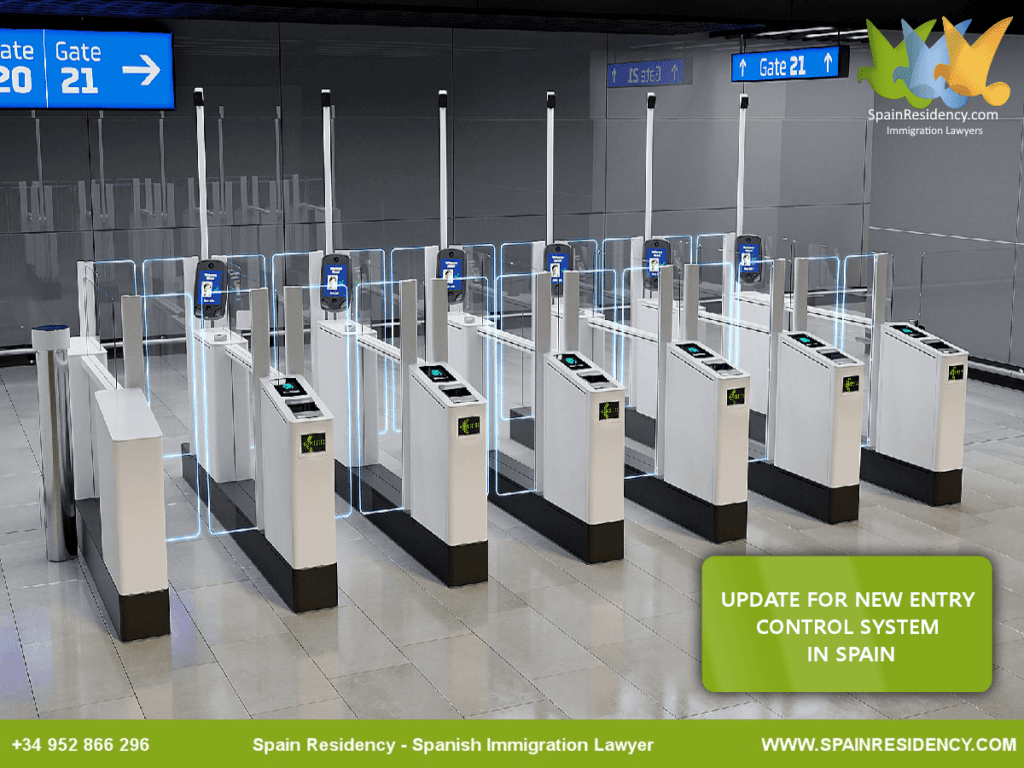New entry control system for spain – update.
Menu:
In this post we cover the following: (click any section to see its content)
New entry control system for spain – update:
LATEST DEVELOPMENTS:
The introduction of the SES system has been delayed indefinitely.
Initially set to launch on November 10th, the European Union has postponed the SES system due to concerns over potential disruptions at ports and airports. This new entry and exit control system remains untested, prompting caution.
The European Commission is now evaluating a phased, gradual deployment of fingerprint-based border controls, potentially starting in late 2024 or 2025.
This delay mirrors the setbacks experienced by the ETIAS system, which has been repeatedly postponed since 2020 and is now expected to be operational by mid-2025. Similarly, the SES system will not be implemented for Schengen area passengers in the near future.
OVERVIEW OF THE SES SYSTEM:
The SES system will collect and store information on individuals entering the Schengen zone for short-term stays, such as tourism. This electronic system will gather data such as:
- Full name
- Entry and exit dates
- Points of entry and exit within the Schengen area
- Passport details
- Photograph
- Fingerprints
- Record of previous entry refusals
In addition to this, the system will automatically calculate the remaining time a traveler is permitted to stay and will issue alerts to EU member states when the authorized period is exceeded.
Data will be retained for three years for those who adhere to the short-stay rules, and for five years for individuals who overstay their permitted duration.
Authorities responsible for border control, visa issuance, and immigration compliance will have access to the SES system for checking entry or residency conditions.
WHO WILL BE AFFECTED BY THIS CONTROL?:
The SES control will apply to all non-EU citizens entering Spain, including:
- Visitors who do not require a visa to enter Spain
- Those who require a visa to enter Spain
Important Note: The SES system is distinct from ETIAS, and the two processes should not be confused.
COUNTRIES ADOPTING THE NEW PASSPORT CONTROL:
Countries Adopting the New Passport Control
The following countries will implement this new passenger control system:
| Austria | Liechtenstein |
| Belgium | Lithuania |
| Bulgaria | Luxembourg |
| Croatia | Malta |
| Czech Republic | Netherlands |
| Denmark | Norway |
| Estonia | Poland |
| Finland | Portugal |
| France | Romania |
| Germany | Slovakia |
| Greece | Slovenia |
| Hungary | Sweden |
| Iceland | Switzerland |
| Italy | Spain |
| Latvia | – |
SES SYSTEM OVERVIEW:
SES System Overview
The SES infrastructure includes:
- A centralized system that manages a database of biometric and alphanumeric data
- A uniform national interface for each participating country
- Secure communication channels between the SES and VIS systems
- Encrypted infrastructure to connect national border systems with the central SES system
- A data archive to generate customizable reports and statistics
- A web service that allows third-country nationals to verify their remaining authorized stay
SpainResidency will continue to provide updates on this new entry control system and any changes affecting those traveling to Spain.
ALL TYPES OF RESIDENCY AVAILABLE IN SPAIN:
- Golden-Visa Spain (residence in Spain by investment)
- Non-Lucrative visa Spain (Spanish visa non lucrative)
- Self-Employed visa Spain (self employed expats in Spain)
- Digital-Nomad visa Spain (remote worker in Spain)
Please see-here our video-blog with options and legal-advice to obtain residency in Spain.
Remember that immigration procedures and immigration regulations change regularly, so it’s crucial to stay updated with the latest information from reliable sources. If you have specific questions or concerns about your situation, it’s advisable to consult with immigration authorities or legal professionals specializing in immigration matters, to do this, please click-here »
DO YOU REQUIRE ASSISTANCE TO APPLY FOR RESIDENCE OR CITIZENSHIP IN SPAIN?
We are a Spanish Solicitor and assist our clients with all types Spanish legal processes.
Permanent residency is obtained after 5 years of Spanish Residency through Self-Employed Residency, Digital-Nomad, Non-Lucrative Residency or Golden-Visa. This followed by 5 years as a permanent resident in Spain and means you can then obtain Spanish Citizenship with a Spanish Passport.


